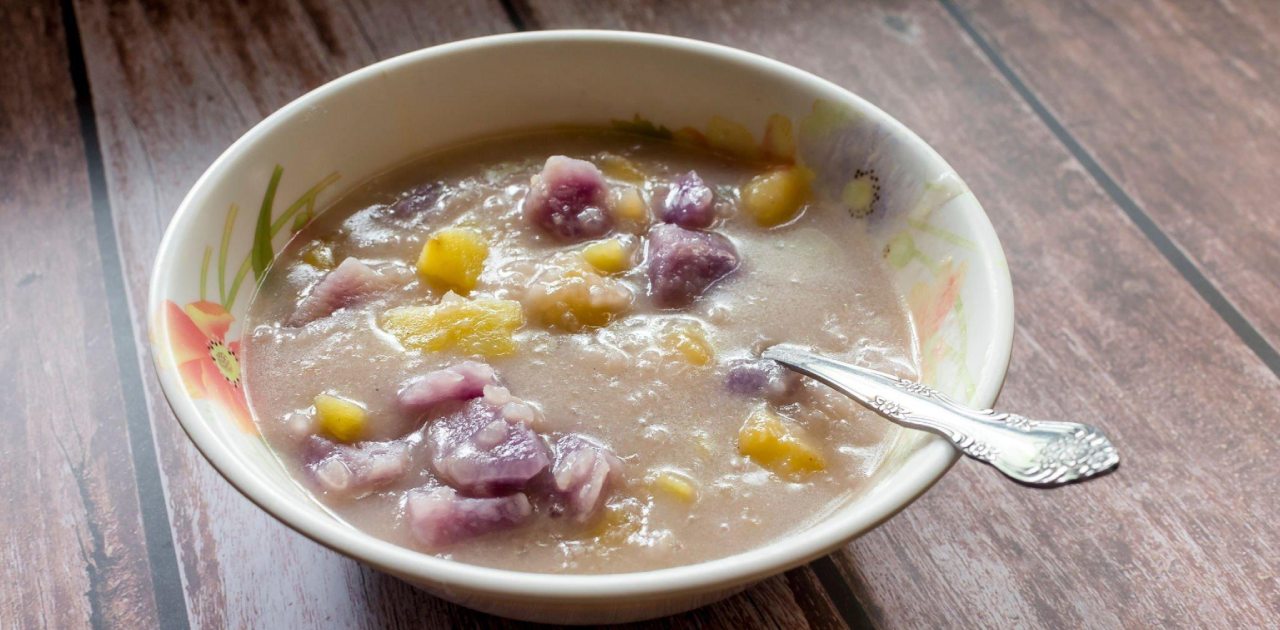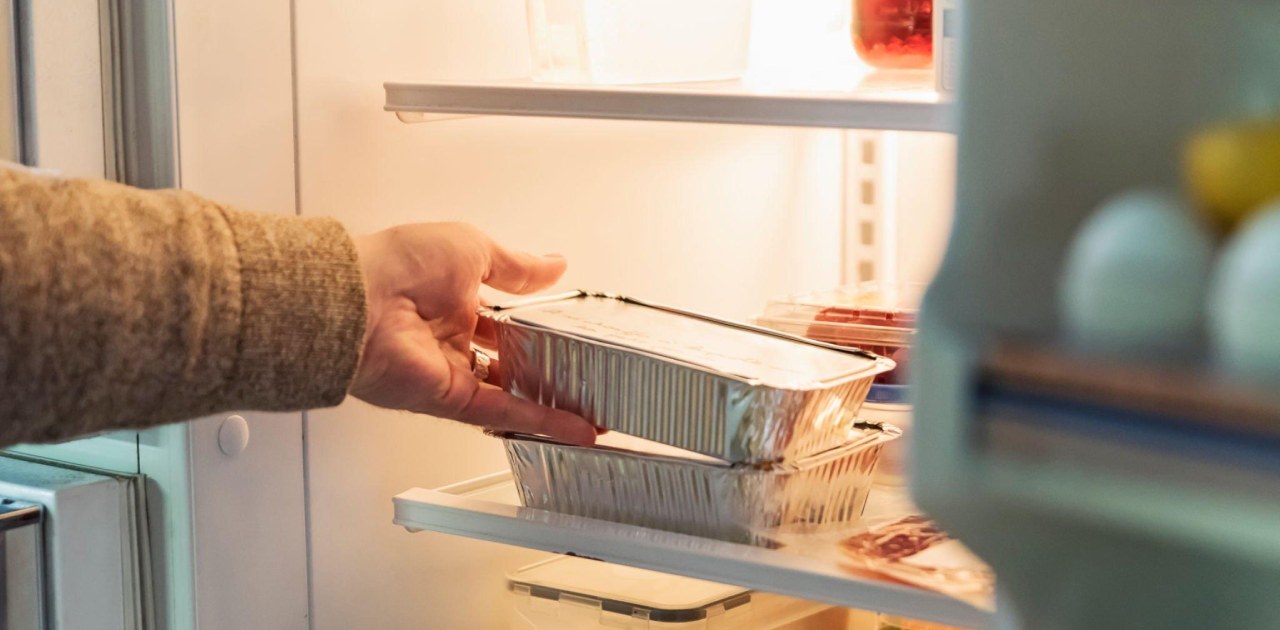Binignit is a traditional Filipino dessert that is usually enjoyed during the Lenten season. It is a sweet soup made with coconut milk, glutinous rice balls, and a variety of root crops and fruits. In the Bisaya region of the Philippines, Binignit is a popular delicacy that is often served during fiestas and other special occasions.
In this article, we will take a closer look at Binignit Bisaya, its history, ingredients, and how to make it, as well as some tips for perfecting your Binignit Bisaya recipe.
Introduction to Binignit Bisaya
Binignit Bisaya, also known as Ginataang Halo-Halo, is a sweet soup that is made with a variety of root crops and fruits. It is a popular dessert in the Bisaya region of the Philippines and is often served during fiestas and other special occasions. The soup is creamy and sweet, with the combination of different flavors and textures making it a unique and delicious dessert.
History and cultural significance of Binignit Bisaya
Binignit Bisaya has a rich history that traces back to the Visayas region in the Philippines. It is considered a staple dessert during special occasions and celebrations, such as fiestas, family gatherings, and religious events. The dish has also become a popular offering during Holy Week, particularly on Good Friday, when Filipino Catholics observe fasting and abstinence from meat.
It is believed that the dish’s sweet and creamy flavors provide comfort and sustenance during this solemn time of the year.
Traditionally, Binignit Bisaya is made with a combination of local ingredients that are abundant in the Visayas region. This includes root crops such as taro (gabi), purple yam (ube), and sweet potato (kamote), which are cooked until tender and starchy. Other key ingredients include glutinous rice balls (bilo-bilo) made from glutinous rice flour and water, and ripe jackfruit (langka) for added sweetness and aroma.
All of these ingredients are cooked in coconut milk, which gives Binignit Bisaya its distinct creamy and indulgent texture.
Over the years, different variations of Binignit Bisaya have emerged, with some families adding their own twist to the traditional recipe. Some recipes may include bananas, tapioca pearls, or even sago palm pearls, which add additional texture and sweetness to the dish. However, the basic concept of Binignit Bisaya remains the same – a sweet and creamy dessert made with a combination of root crops, fruits, glutinous rice balls, and coconut milk.
Binignit Bisaya has a long history in the Philippines, and its roots can be traced back to the pre-colonial era. The soup was originally made by the indigenous people of the Bisaya region using ingredients that were abundant in their environment, such as root crops and fruits.
Over time, Binignit Bisaya became a popular dessert among the Bisaya people and was often served during fiestas and other special occasions. The soup has become a symbol of the Bisaya culture, and it is now enjoyed by people all over the Philippines.
Now, let’s dive into the kitchen and learn how to make this delightful dessert at home with a step-by-step Binignit Bisaya recipe.
Ingredients needed for Binignit Bisaya
To make Binignit Bisaya, you will need the following ingredients:
- 1 cup glutinous rice flour
- 1 cup water
- 1 can coconut milk
- 1/2 cup brown sugar
- 1/2 cup sweet potato, cubed
- 1/2 cup taro, cubed
- 1/2 cup purple yam, cubed
- 1/2 cup jackfruit, sliced
- 1/2 cup saba banana, sliced
- 1/2 cup tapioca pearls
- 1/4 cup langka (jackfruit) preserves
- 1/4 cup kaong (sugar palm fruit)
- 1/4 cup nata de coco (coconut gel)
Step-by-step instructions on how to make Binignit Bisaya
- In a large mixing bowl, combine the glutinous rice flour and water. Mix until a dough is formed.
- Roll the dough into small balls and set aside.
- In a large pot, combine the coconut milk and brown sugar. Stir until the sugar is dissolved.
- Add the sweet potato, taro, and purple yam to the pot. Bring to a boil and then reduce the heat to low. Simmer for 10 minutes.
- Add the jackfruit and banana to the pot. Simmer for another 5 minutes.
- Add the tapioca pearls, langka preserves, kaong, and nata de coco to the pot. Simmer for another 5 minutes.
- Add the glutinous rice balls to the pot. Simmer for another 5 minutes or until the rice balls float to the surface.
- Serve hot or cold.
Tips for perfecting your Binignit Bisaya recipe
- Use fresh ingredients for the best flavor.
- Adjust the amount of sugar according to your taste preference.
- Cook the root crops until they are tender but not mushy.
- Be careful not to overcook the tapioca pearls, as they can become mushy.
- Add more coconut milk if the soup is too thick.
Variations of Binignit Bisaya recipe
There are many variations of Binignit Bisaya, and different regions in the Philippines have their own unique versions. Some variations include:
- Adding pandan leaves for flavor
- Using brown sugar or muscovado sugar instead of white sugar
- Adding corn kernels or beans
- Using coconut cream instead of coconut milk
- Adding peanuts or cashew nuts for texture
Serving and storing Binignit Bisaya
Binignit Bisaya can be served hot or cold. It is usually served as a dessert or a snack. Leftovers can be stored in an airtight container in the refrigerator for up to three days.
Health benefits of Binignit Bisaya
Binignit Bisaya is a healthy dessert that is rich in vitamins and minerals. The root crops and fruits used in the soup are a good source of dietary fiber, which can aid in digestion and help regulate blood sugar levels. Coconut milk is also rich in medium-chain triglycerides, which can help boost metabolism and promote weight loss.
Frequently Ask Question about Binignit Recipe
Can I substitute any of the ingredients in Binignit?
Yes, you can make some substitutions based on your preference and availability of ingredients. For example, you can use purple yam (ube) instead of taro root, and you can add other fruits like sweet corn or durian for variation.
How do I make the glutinous rice balls for Binignit?
You can easily make glutinous rice balls by mixing glutinous rice flour with water until it forms a smooth dough. Roll the dough into small balls and boil them until they float to the surface.
Can I adjust the sweetness of Binignit?
Yes, you can adjust the sweetness of Binignit by adding more or less sugar according to your taste preference. You can also use other sweeteners like brown sugar or palm sugar for a different flavor.
How do I cook Binignit?
In a large pot, combine the cooked root crops, glutinous rice balls, coconut milk, and sugar. Bring to a boil and then lower the heat to simmer for about 10-15 minutes, or until the flavors have melded together. Stir occasionally to prevent burning. Add the jackfruit and bananas towards the end of cooking.
Can I make Binignit ahead of time?
Yes, you can make Binignit ahead of time and store it in the refrigerator for up to 2-3 days. Just reheat it gently on the stove or in the microwave before serving.
Is Binignit served hot or cold?
Binignit is traditionally served hot as a comforting dessert, but some people also enjoy it chilled as a refreshing treat during hot weather.
Can I freeze Binignit?
It is not recommended to freeze Binignit as the texture of the root crops and fruits may change after thawing.
Can I customize Binignit with my favorite ingredients?
Yes, you can customize Binignit with your favorite ingredients or based on what you have available. You can add or substitute fruits, root crops, or other ingredients to make it your own unique version of Binignit.
Conclusion and final thoughts
Binignit Bisaya is a delicious and unique dessert that is enjoyed by people all over the Philippines. It is a symbol of the Bisaya culture and is often served during fiestas and other special occasions. With the right ingredients and cooking techniques, you can easily make Binignit Bisaya at home and impress your friends and family with your culinary skills.
So, why not bring the taste of the Visayas into your own home and try making Binignit Bisaya with this simple and authentic recipe? It’s a delightful treat that will surely warm your heart and satisfy your sweet tooth. Happy cooking!
CTA: Try making Binignit Bisaya at home and share your experience with us in the comments section below!





